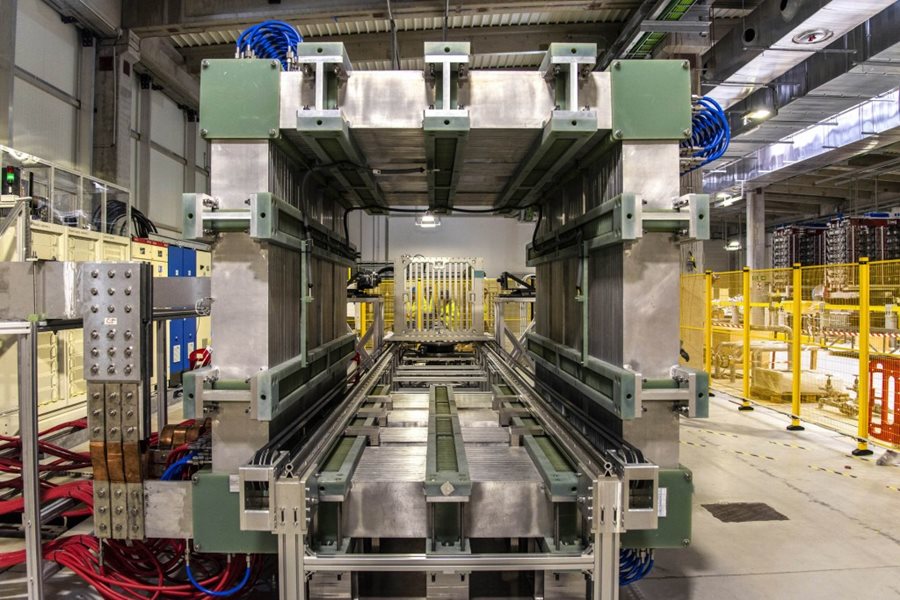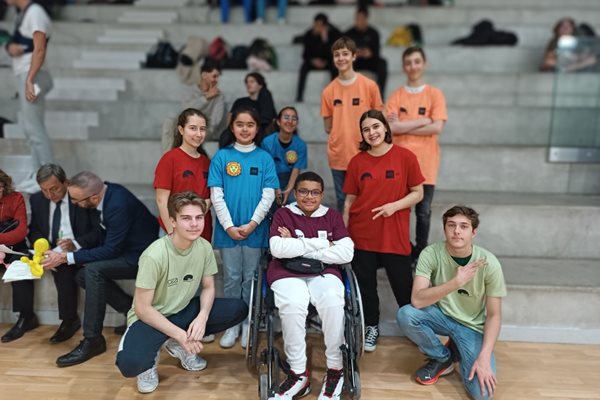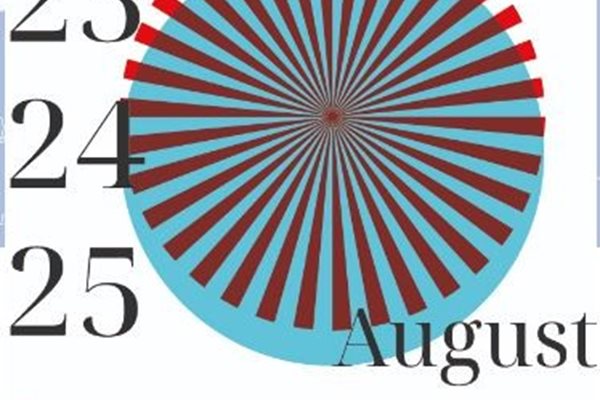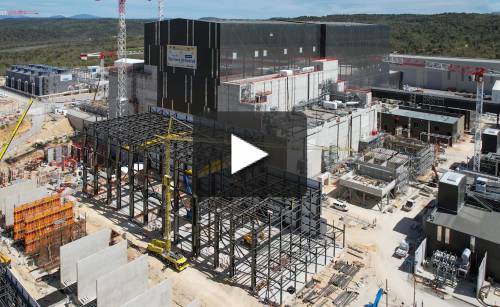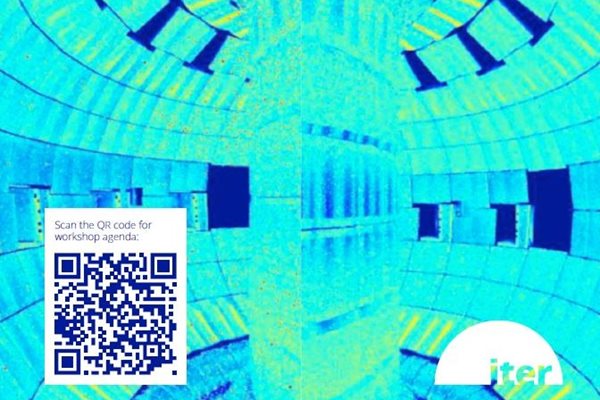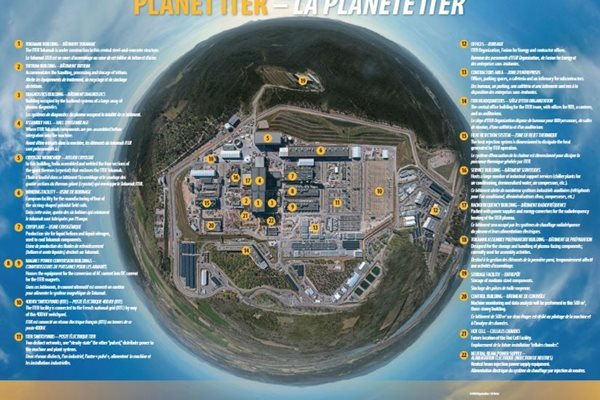
you're currently reading the news digest published from 15 May 2023 to 30 May 2023
featured2
of-interest2
video1
publication1
event1
press34
featured
Test facility | How do electronics react to magnetic fields?
A tokamak is basically a magnetic cage designed to confine, shape and control the super-hot plasmas that make fusion reactions possible. Inside the ITER Tokamak, different types of coils will generate different magnetic fields, each with a specific function and intensity. But whereas the magnetic 'lines' from the toroidal field coils will remain inside the machine's torus, those from the central solenoid and ring-shaped poloidal field coils will reconnect outside it. As a consequence, a large portion of Tokamak Complex components will be exposed to magnetic fields whose intensity, although rapidly decreasing with distance¹, will be significant. Magnetic fields can affect electronic and electromechanical components. In ITER, as scores of such devices will be located in a radius of a few dozen metres from the Tokamak's core, it is of crucial importance to know if and how they might be impacted or damaged. 'In installations that generate magnetic fields such as particle accelerators and other tokamaks, the electronics can be installed as far from the magnetic source as necessary,' explains David Beltran, head of the ITER Instrumentation & Control (I&C) Infrastructure Section. 'In ITER however, due to the building's layout, we do not have such a possibility. In a way, we are dealing with an issue that no project has really faced on that scale before.' Electronic and electromagnetic components do not come with a certificate or qualification that would specify the maximum magnetic intensity they can 'see' before risking a dysfunction. One exception is pacemakers, whose exposure limit has been determined at 0.5 milliTesla (mT). In ITER, during operation, the electronics closest to the machine (located in the port cells) will be awash in a field of approximately 200 milliTesla (mT) and all the I&C cubicles and electrical distribution boards located in the Tokamak Building will face a magnetic field comprised between 20 mT and 2.5 mT. Over the past decade, ITER has developed a protocol to test electronic and electromechanical components. Three years ago, a contract was placed with the Institute of Plasma Physics (ASIPP), Chinese Academy of Sciences, to build an installation that could accommodate large electronic and electromechanical components such as valves, computers, or pumps and submit them to the very magnetic fields they will be exposed to during operation. After manufacturing and testing in China, the Static Magnetic Field Test Facility, with a maximum field of 275 mT and a test volume of one cubic metre, was transported to ITER and reassembled during the first half of 2022. On 23 May, after legal inspections and approval, the ITER teams proceeded to a first test on a tin-can-size electromechanical valve for the cooling water system. Installed in one of the twin Magnet Power Conversion Buildings where sufficient space will remain available during the first phases of operation, the Static Magnetic Field Test Facility comprises eight power supply modules that deliver DC current (up to 12 kA) to a square, arch-like, water-cooled aluminium coil. Power is delivered through a busbar and a remote handling system—operating along three axes—is used to position the component inside the coil. Reproducing the anticipated magnetic conditions during plasma operation for each type of component, the tests vary in duration from a few minutes to a few hours. 'In order to avoid any malfunctioning of the electrical and electromechanical components during plasma operation, we will have to test a sample of each and every type of component exposed to the magnetic field. The ageing process will be simulated by applying a 40 percent increase to the field's parameters,' says David. Depending on the time devoted to preparations and the duration of exposure for the different components, the installation could perform between 100 and 200 tests per year. 'This test facility is not for ITER Organization teams exclusively,' says Sergio Orlandi, head of the ITER Plant Construction Department and interim head of the Machine Construction Department. 'It is open to the Domestic Agencies for the testing of the equipment they procure, and also to external contractors that contribute to ITER." As for the electromechanical valve that was tested last week, the result obtained shed light on its robustness and reliability, providing valuable insights for potential applications in magnetic-field-sensitive environments. ¹ Like many things in nature (light, radiowaves, gravity, sound ...) the intensity of a magnetic field follows what is called the inverse-square law. The force of a magnet decreases so rapidly that at a distance of 30 metres it has lost 99.9 percent of its original intensity.
ITER Robots | No two alike
More than 500 students took part in the latest ITER Robots challenge. Working from the same instructions and technical specifications, they had worked in teams over the school year to create and program Lego-based robots to perform dynamic tasks inspired by ITER remote handling challenges. On Tuesday 23 May, their efforts were put to the test ... The ITER Robots competition was originally conceived by Agence Iter France, with the participation of engineers from the ITER Organization and the French Alternative Energies and Atomic Energy Commission (CEA). It is now supported by the French Ministry of Education. For the 12th edition, participating teams had to take part in a three-prong challenge—not only demonstrate that their robots could successfully transport objects along pre-defined trajectories, grasp and release them, and respond to program modifications on the spot, but also develop presentation materials to explain the development of their designs, and answer questions in a "general culture" test to show familiarity with the ITER Project and some cultural knowledge about the ITER Members. On the margins of the contest, companies specializing in artificial intelligence, engineering and robotics had set up stands with hands-on activities. The ITER Organization was also present with a mockup of the ITER machine and a game that turned students into fusion power plant operators in the year 2103. See some of the fun that was had in this video of the event on the ITER YouTube channel. A podcast featuring interviews with young ITER Robots competitors has also just been released on the ITER podcast page (also available in today's ITER Newsline).
of-interest
The ITER Podcast: Episode 4, Season 2
Episode 4 of The ITER World, ITER's second podcast miniseries, is now available.What do a 14 year old in the south of France, a robot competition, and a scientist at a pioneering nuclear fusion experiment have in common? The love for coding and human collaboration! In "ITER Robots: Connecting as Humans," host Kruti Mawani Fayot joins middle and high school students at the annual ITER Robots event, where they compete with Lego-based robots that have been designed and programmed to complete ITER-like handling tasks. Listen to the latest episode directly on the ITER website or through the following channels: Amazon Music, Apple Podcasts, Google Podcasts, PodBean, Spotify, and Tune In. Visit the podcast page of the ITER website for all Season 1 and Season 2 episodes.
Register now: FuseNet PhD event
Join fellow fusion PhD candidates from all over Europe in August in Lausanne, Switzerland! The annual PhD Event organized by the European Fusion Education Network, FuseNet, will take place this year at the École Polytechnique Fédérale de Lausanne (EPFL).From 23 to 25 August, meet and greet fellow fusion researchers. The event will feature high-profile keynote speakers, a top-notch scientific program and the much anticipate PechaKucha contest, where students present their research in 20 slides, 20 seconds per slide. See all information here. Register before 14 June 2023.
